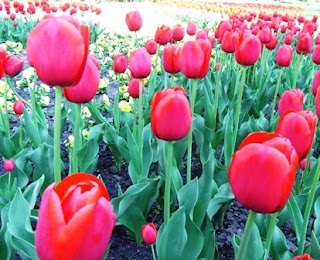Part II: Fulda-Weimar-Halle-LeipzigOn his way to Leipzig to take lessons in opthalmology, Dr. Jose Rizal visited beautiful and historical places like Fulda, Weimar, and Halle.
FuldaFulda is a relatively small city along the Fulda River in middle Germany. It was founded on a Benedictine monastery in 744 and is an important center of catholicism in Germany. It is well-known for its Baroque style buildings. When I first visited it in the mid 1990s during a student field trip, I was impressed by its beautiful castle. I also became aware that the Fulda tires that one can buy in the Philippines come from this city.

Fulda cathedral

Fulda castle

View of the city
Weimar is one of the great cultural sites in Europe. It is the home of the Weimar classicism started by Goethe, Schiller and Herder. The town has been a pilgrimage site for the German intelligentsia ever since Goethe came here in the late 18th century. It was therefore not a surprise that Rizal visited the town. Weimar has also a great music tradition. Bach, Liszt and Hummel have lived and worked here. In the early part of the 19th century, the famous Bauhaus architectural movement was founded in Weimar by Walter Gropius.
I visited the city in September 2008 during our Humboldt fellows tour.

Two great men of letters who influenced world literature: Johann Wolfgang von Goethe (1749-1832) and Friedrich Schiller (1759-1805) in front of the German national theatre

Goethe's house (now the National Goethe's Museum)

Schiller's house

Bauhaus museum

Market place (central plaza)

View of the city near the Goethe and Schiller monument
Halle is a trade and science city in middle eastern Germany along the Saale River (20 km north of Leipzig). Halle has a long tradition as a trade center being a traditional source of salt, a very expensive commodity in olden times. In fact, the name Halle and Saale have their origin on the pre-Germanic word for salt.
It is also the birthplace of Georg Friedrich Haendel (1685-1759) (English: George Frederic Handel) one of the greatest composers during the Baroque period (the house where he was born is now the Handel Museum). One of his compositions Zadok the Priest is used as the anthem of the UEFA Champions League.
Halle is the home of the Leopoldina, the world’s oldest science academy and now the national science academy of Germany.
The 500 year-old University of Halle-Wittenberg (Martin Luther University) is one of the most important German universities. Christian Wolff (1679-1754), one of the three founders of modern philosophy (Leibniz, Wolff, and Kant), was among the first professors of the university.
I have lived and conducted scientific research in this city for a total of 2 years (1999, 2004, 2008-09).

The park near the New Theatre and Post Office

Market place (central plaza) with Haendel monument

House of Haendel family where the composer was born and grew up (now the Haendel Museum)

The Marian Church (16th century) where Martin Luther used to preach, and the Gothic Red Tower (15th century)

Administration buildings of the University of Halle-Wittenberg

House where the famous philosophy professor Wolff lived (now Wolff's museum)

Saale River in autumn
Leipzig is a major trade and cultural city in middle eastern Germany. Many world renowned thinkers and scientists (e.g. G.W. Leibniz, J.W. Goethe, W. Wundt, G. Hertz, F. Nietzsche, W. Heisenberg) have studied and or taught at its 600 year-old university, the University of Leipzig.
Leipzig is also a “Bach City” since Johann Sebastian Bach (1685-1780) the greatest Baroque composer, served as the director of music of the principal churches of the city particularly the St. Thomas’s Church. Aside from Bach, other great composers like Wagner, Mendelssohn-Bertholdy and Schumann have also lived or worked in Leipzig. It is also the home of the world famous Gewandhaus Orchestra founded in 1743.
When Rizal came to Leipzig, the most famous professor at the time was probably Wilhelm Wundt, one of the founders of modern experimental psychology.
German Chancellor Angela Merkel is a physics graduate of the University of Leipzig.
In the last 10 years, I had the opportunity to visit this beautiful city many times.

Leipzig's central train station, one of the largest in Europe

The historical Church of St. Nicholas (left) and university buildings (right)


St. Thomas's Church where Bach was based

The organ in St. Thomas Church that Bach used

Bach's grave inside the St. Thomas Church

Statue of J. W. Goethe who studied in Leipzig

Old Town Hall

Statue of the great 19th century German-Jew composer Felix Mendelssohn-Bartholdy in front of the St. Thomas Church

 Two great men of letters who influenced world literature: Johann Wolfgang von Goethe (1749-1832) and Friedrich Schiller (1759-1805) in front of the German national theatre
Two great men of letters who influenced world literature: Johann Wolfgang von Goethe (1749-1832) and Friedrich Schiller (1759-1805) in front of the German national theatre The Marian Church (16th century) where Martin Luther used to preach, and the Gothic Red Tower (15th century)
The Marian Church (16th century) where Martin Luther used to preach, and the Gothic Red Tower (15th century) 




















































